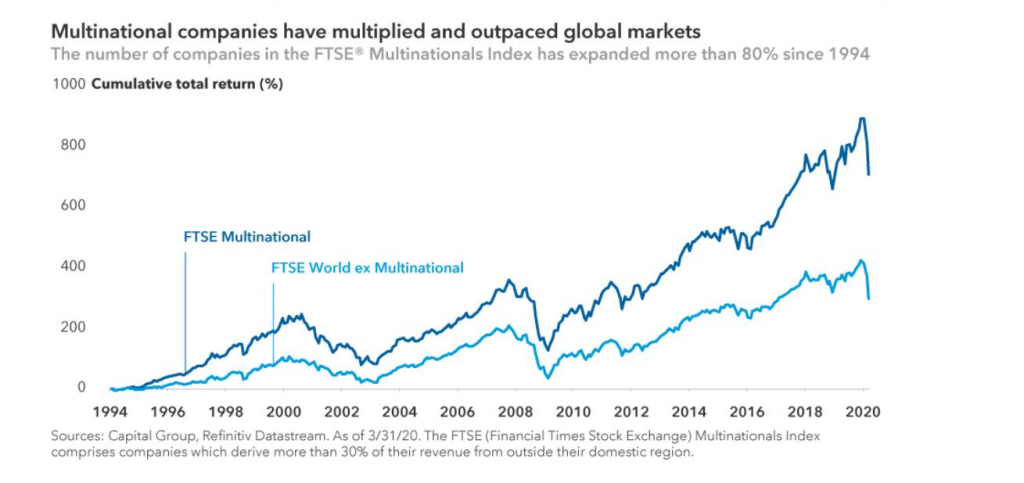1.Treasury Issuance Will Shatter Records in 2020
Guggenheim
It is difficult to think about the E in the P/E ratio when the economy is shut down and half of blue-chip companies don’t want to provide guidance on full-year earnings because of all the uncertainty. The Fed probably doesn’t worry much about if the forward multiple is 18, 20, or 25, their clear goal is to support markets at least as long as we are in lockdown and maybe until the unemployment rate has moved into the single digits again. With this backdrop the chart below isn’t particularly helpful if one wants to understand if stocks are going up or down from here. For more see also here and here, and also here.

———————————————–
Let us know if you would like to add a colleague to this distribution list.
Torsten Sløk, Ph.D.
Chief Economist
Managing Director
Deutsche Bank Securities
The Latest Data-With the Q1 GDP Advance Estimate, we now have an updated look at the popular “Buffett Indicator” — the ratio of corporate equities to GDP. The current reading is 156.3%, up from 156.0% the previous quarter.

Advisor Perspectives
Continue reading
Capital Group Market Insights Where do stock markets go from here?– Joyce Gordon Jody Jonsson
https://www.capitalgroup.com/advisor/insights/articles/where-do-stock-markets-go-from-here.html
Continue readingBespoke

This morning, we highlighted the recent performance of sector ETFs noting how Health Care has led the way higher rising the furthest above its 50-DMA. Consumer Discretionary (XLY), Technology (XLK), Materials (XLB), Communication Services (XLC), and Consumer Staples (XLP) each had also risen above their 50-DMAs. Given their outperformance, as shown in the table below, headed into today these were the sectors closest to their levels on the S&P 500’s last all time high on February 19th. The Health Care ETF (XLV) actually headed into today less than 2% away from its 2/19 levels and XLP was also under 10% away.
https://www.bespokepremium.com/interactive/posts/think-big-blog/outperformers-underperform
Continue reading